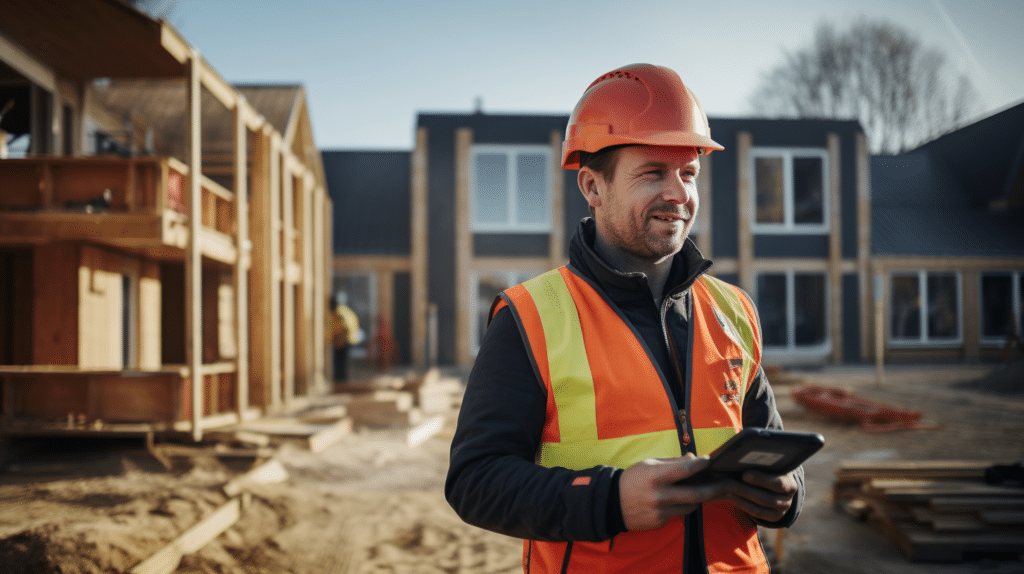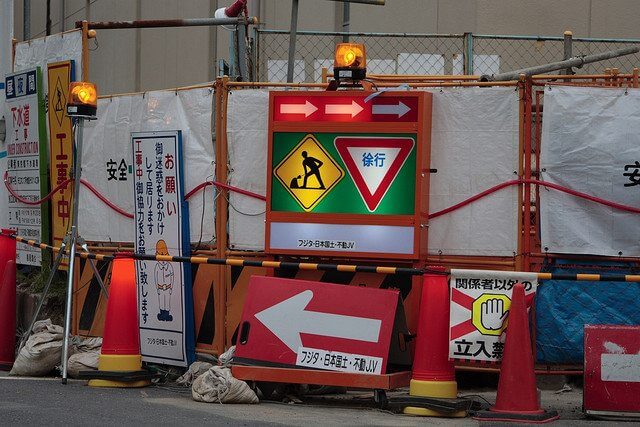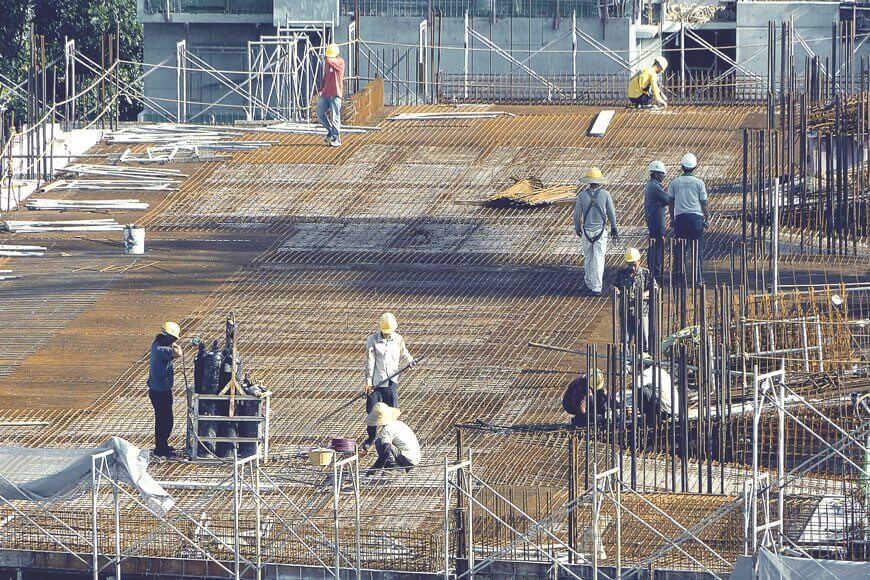The real estate crisis in France is not an isolated phenomenon, but a reflection of a market in constant flux, pulled between the imperative for innovation and the preservation of French architectural identity. This dynamic creates a fertile ground for structural tensions. The focal point of this conflict is often the rapid adoption of new technologies like Building Information Modeling (BIM) and Quality, Health, Safety, and Environment (QHSE) standards, which seek to redefine the contours of the traditional real estate sector.
History of the Real Estate Crisis
The real estate crisis in France is an enigma wrapped in the layers of the country’s economic and regulatory history. Exploring its origins takes us back to a time when the balance between supply and demand was already starting to tip the wrong way.
The Macroeconomic Context
The fluctuations in the French real estate market have often reflected the global economic shockwaves. The 2008 financial crisis marked a turning point, leaving deep scars in the structure of the real estate market, with a marked decline in prices and a slowdown in new construction.
Regulation and Taxation
Strict urban planning regulations, coupled with rigorous real estate taxation, have created an environment sometimes inhospitable for investors and developers. Preserving architectural heritage is a noble endeavour, but it has often impeded innovation and expansion in the sector.
Market Dynamics
The persistent imbalance between demand and supply, exacerbated by speculation, has led to price inflation, putting property ownership out of reach for many households, particularly in densely populated urban areas like Paris.
The real estate crisis in France is the product of a complex mix of economic, regulatory, and market factors. It’s fertile ground for examining how innovative strategies and emerging technologies like BIM and HSE standards can be integrated to improve the resilience and viability of the real estate market, while navigating the sometimes turbulent waters of regulation and tradition.
Interest Rates and Rental Market: Key Variables
The dynamics of the real estate market are deeply influenced by interest rates and rental market trends. These elements, interacting with the other factors previously discussed, play a vital role in shaping the current state of the real estate crisis.
The Second-Hand Market, a Concerning Slowdown
The second-hand real estate market is experiencing a notable slowdown, with a predicted transaction decrease of 10 to 15% for the year 2023. This deceleration is attributed to several factors, including the end of easy access to capital and uncertainties surrounding energy-inefficient buildings (“passoires thermiques”).
The Impact of Interest Rates
The recent rise in mortgage interest rates has cast a shadow over the market. Last April, the amount of new loans granted experienced a drastic fall, dropping from 25.9 billion euros the previous year to 15 billion euros. The average interest rates reached 3.15% in April, then 3.28% in May, up from 3.04% in March, marking their highest level since 2014 and a substantial increase compared to the previous year.

Rental Market: A Saturated Sector
The rental market is also under pressure, with an average national tension increase of 68%. This saturation results from declining supply and rising demand. In 2022, the demand for rental housing jumped by 54%, while the supply regressed by 10%.
These trends highlight the complexity and interconnectedness of the different aspects of the real estate market. The rise in interest rates and the saturation of the rental market, combined with the slowdown in the second-hand market, are symptoms of a broader crisis that requires a holistic approach and innovative solutions to navigate towards calmer waters.
Lire aussi : Applying lean construction to residential projects
Lire aussi : How Has Covid Affected the Construction Industry?
The Impact of New Technology
The real estate sector, historically rooted in traditional practices, is on the cusp of a technological revolution. The integration of new technologies is seen as a potential catalyst for solving some of the systemic issues plaguing the French real estate market.
Adoption of BIM
Building Information Modeling (BIM) shines as a bright light on the technological horizon. It promises improved project management, cost reduction, and increased operational efficiency. BIM enables precise planning and visualisation of real estate projects, bridging the gap between architectural dreams and tangible reality. However, its adoption poses challenges, requiring skill upgrades and acceptance from traditional players in the sector.
QHSE Standards
The Quality, Health, Safety, and Environment (QHSE) standards have emerged as essential pillars to ensure the quality and safety of future buildings. They encourage a responsible and sustainable approach to construction. Integrating these standards represents a step forward towards safer and more eco-friendly buildings, though their implementation can be seen as costly and complex, especially for those less familiar with these new methodologies.
Modernised Construction Programs
The digital era brings modernised construction programs, enhanced by digital checklists and collaborative platforms. These innovative tools facilitate coordination, communication, and project tracking, thereby reshaping the contours of project management in real estate.
New technology brings a wave of promises but also challenges. It holds the potential to redefine the real estate landscape, to smooth out some of the rough edges that have contributed to the current crisis. However, the path to widespread adoption is fraught with obstacles and demands a willingness to adapt and openness to change from all players in the sector.

Challenges to Overcome… and Opportunities to Seize
The integration of new technologies and working methods in the French real estate sector presents a double-edged sword. On one hand, it brings unique challenges, and on the other, it opens the door to unexplored opportunities that can help mitigate the real estate crisis.
Challenges
Technological Adoption: Embracing emerging technologies like BIM and aligning with HSE standards require a learning curve. This can be daunting, especially for traditional market players who may view these new methods as a disruption rather than an improvement.
Initial Investment: The initial investment required for implementing new technologies can be prohibitive for some, especially in an already financially constrained market.
Opportunities
Process Optimization: New technologies enable process optimization, error reduction, and increased efficiency, which can translate into cost reductions and better long-term profitability.
Buildings of the Future: Modern technologies pave the way for designing and constructing buildings of the future, which are more eco-friendly, safer, and better suited to the changing needs of occupants.
Enhanced Communication: Collaborative platforms and digitalized project management tools facilitate communication among stakeholders, thereby improving coordination and client satisfaction.
Innovative Construction Programs
Adopting innovative construction programs, supported by digital checklists, can transform how projects are managed, ensuring better transparency and informed decision-making.
The French real estate sector is at a crossroads. Successfully integrating new technologies could be key to overcoming current challenges and steering the market towards a more stable and prosperous future. The path will not be without obstacles, but the potential rewards could well be worth the effort of adaptation and innovation.
Read More : Modular Construction: Pros and Cons
Read More 5 steps to prevent common construction schedule delays
Case Studies
The practical application of new technologies and methods in the French real estate sector offers a panorama of hope and potentialities. Here are some innovative projects that highlight how the industry can evolve to overcome the current crisis.
Innovative Real Estate Projects
Concrete examples of real estate projects that have embraced BIM, HSE standards, and other new technologies illustrate the potential of these tools to improve efficiency, safety, and sustainability.

Use of Digital Checklists
The adoption of digital checklists in project management allows for rigorous tracking and ensures compliance with standards, which is crucial for the success of projects and client satisfaction.
Structured Construction Programs
Implementing structured construction programs, supported by modern technologies, promotes better coordination and communication among stakeholders, leading to a smoother and more efficient project realisation.
These case studies serve as beacons in the storm, showing the path towards successful integration of innovation in the French real estate sector. They demonstrate how, even in a market traditionally resistant to change, the adoption of new methods can lead to significant advancements. Exploring these successful examples offers not only an insight into potential solutions to the real estate crisis but also a glimmer of hope for the future of the sector.
The Future of Real Estate in France
The French real estate horizon, through clouded with challenges, is bright with unexplored opportunities. The key lies in the symbiosis between proven traditions and bold innovations.
Integration of Technological Innovations
The widespread adoption of BIM, HSE standards, and other new technologies is likely to redraw the real estate landscape, creating buildings of the future that embody both the French architectural heritage and the modern demands of sustainability and efficiency.
Synergy between Tradition and Innovation
The marriage of architectural tradition and technological innovation can bring about a renaissance in the sector, leading to creative solutions for tackling issues of accessibility, quality, and safety in real estate.
Avant-Garde Construction Programs
Cutting-edge construction programs, enriched by digital checklists and collaborative platforms, can transform the way real estate projects are conceptualised, planned, and executed.

The future of real estate in France can be bright if industry stakeholders embrace change and invest in adopting new technologies and methods. The challenges are significant, but with a collective will to innovate and adapt, the French real estate sector has the capacity to overcome the current crisis and thrive in the modern era. Echoes of innovation are already resounding through some projects, and with continued commitment, French real estate can pave its way towards a promising and sustainable future.
Conclusion
The real estate crisis in France is a complex ordeal, an enigma woven from multiple historical, regulatory, and economic threads. Nevertheless, through the exploration of new technologies and innovative methods, glimmers of hope emerge, promising a future where innovation and tradition coexist harmoniously.
Lesson in Adaptability
French real estate has navigated waves of challenges, and each wave has brought its own lessons. Adaptability emerges as an invaluable virtue, underscoring the importance of openness to change in an ever-evolving world.
Towards a New Chapter
With the adoption of technologies such as BIM, HSE standards, and modernised construction programs, the French real estate sector is on the brink of opening a new chapter. A chapter that, hopefully, will be characterised by resilience, innovation, and an adequate response to the needs of citizens.
Call to Action
It falls upon industry stakeholders – from policymakers to developers, and from investors to construction professionals – to take up the baton of innovation. By collaborating and actively committing to the adoption of new methodologies and technologies, the industry can not only overcome the current crisis but also lay the groundwork for a robust and prosperous real estate market for future generations.
The journey through the real estate crisis in France is an invitation to innovation, a call to embrace the new while honouring the old. It is undoubtedly a challenging task, but with collective will and a clear vision, the French real estate sector has the potential to reinvent itself and thrive in the modern landscape.




